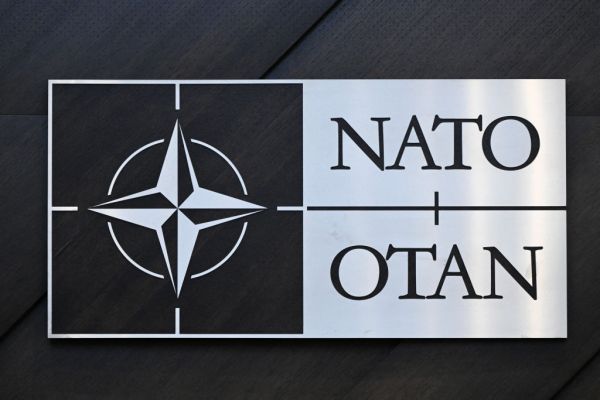The good news is that 20 out of 31 NATO countries are going to increase their defense spending to at least the 2 percent of GDP agreed to in 2014, NATO Secretary-General Jens Stoltenberg announced ahead of the annual NATO summit, which starts today in Washington.
The bad news is that 20 NATO members are going to increase their defense spending to 2 percent of GDP.
Why bad news? Because it’s time to recognize that policymakers have been chasing the wrong metric, one that has caused friction, frustration, and heartburn on both sides of the Atlantic. Instead of measuring members’ defense budgets, the better approach would be to examine how countries can contribute directly to building a defense arsenal for the 21st century—including unmanned aerial and undersea vehicles (UAVs, UUVs) and hypersonic weapons—as well as contending with outer space as a contested domain.
There is already a model for creating bilateral, even multilateral agreements, for co-developing and co-producing specific systems and technologies: the recent AUKUS agreement that enables the U.S. and the U.K. to help Australia build nuclear submarines and also enhances trilateral cooperation on advanced technologies from cyber and AI to hypersonics and quantum. It’s an approach that would not only enable NATO and the U.S. to defend against current threats but deter those threats in the future.
So while it’s laudable, for example, that Greece, Estonia, and Lithuania all contribute above the 2 percent NATO threshold, their actual ability to share NATO’s defense burden is minimal—let alone to develop the new innovative weapons systems we will all need.
By contrast, several of those countries currently not meeting their defense spending obligations such as France (1.9 percent), Italy (1.5 percent), Canada (1.4 percent), and Germany (1.6 percent) have multiple programs and defense companies more than able to work with U.S. counterparts, from hypersonics and UAVs to space.
Measuring a nation’s defense effectiveness by the size of its defense budget is misleading, especially among democracies. The decisions that shape the budget are as much tied to domestic fiscal policy and politics as knowing what’s needed to win wars. A huge part of the Pentagon’s $880 billion budget goes for personnel compensation, health care, and other benefits—not to mention operations and maintenance—as opposed to funding actual weapon systems (according to CRS, about one-third of the total).
In this new era of global competition with China, Russia, and Iran, every defense budget—including ours—is going to require a vital shift of focus more so than new spending.
This is particularly true with so-called autonomous or unmanned systems, or drones. Today, when the skies over Kyiv are filled with Ukrainian and Iranian-made Russian UAVs, and European nations are pledging to provide Ukraine with 1 million drones, we’ve learned that platforms once seen as helpful for taking out the occasional terrorist are proving to be decisive instruments of war. British, German, as well as Australian, Japanese, and Indian companies could be useful partners for American makers like General Atomics, Northrop Grumman, and Boeing in developing next-generation supersonic UAVs that also incorporate AI for swarm and mass air campaigns.
Likewise in shipbuilding. Italian company Fincantieri has already contracted to get into the Constellation-class frigate building business for the U.S. Navy. Japan could be a similar co-production ally, while companies in Denmark and Finland have advanced ship production and design features that can confront China’s surging naval efforts (including its launch of the first-ever drone aircraft carrier). At the same time, co-developing and producing advanced UUVs with NATO allies will be a powerful force multiplier for waging war under the waves.
Three years ago, I wrote that the U.S. had fallen perilously behind both China and Russia in the development of hypersonic weaponry, i.e. missiles that travel at speeds of Mach 5 or a mile a second. Since then, the U.S. has been pushing hard to develop and deploy its hypersonic capabilities. However, by cooperating with allies working on similar lines like Japan, the U.K., Australia, and India, the Pentagon can develop a hypersonic arsenal, and AI-driven detection systems, that will take the initiative away from China and Russia.
Finally, with space poised to become the next Great Commons and a contested domain among the major geopolitical powers, cooperation and co-development in space and space-based assets among the U.S., Japan, Canada, South Korea, France, and the U.K. can protect the future of the space domain from predatory powers like China and Russia.
None of these efforts will require, or will be reflective of, more defense spending. Instead, all these capabilities are a function of our technological and economic strength—the arena where the U.S. and its allies decisively outscore our totalitarian adversaries. In fact, according to Global Finance magazine’s 2022 estimates, the United States and its fellow democracies occupy 18 of the top 20 slots of the world’s most advanced tech countries (the exceptions being the United Arab Emirates, a U.S. ally, and Hong Kong). China, meanwhile, ranks 32nd, while Russia and Iran don’t even place.
Our NATO allies and other democracies have far more to contribute to our collective defense—and shaping a safer, more stable world—than simply checking the box of 2 percent of GDP defense spending. It’s time for U.S. policy to focus on defeating our enemies instead of fighting with our friends.







Please note that we at The Dispatch hold ourselves, our work, and our commenters to a higher standard than other places on the internet. We welcome comments that foster genuine debate or discussion—including comments critical of us or our work—but responses that include ad hominem attacks on fellow Dispatch members or are intended to stoke fear and anger may be moderated.
With your membership, you only have the ability to comment on The Morning Dispatch articles. Consider upgrading to join the conversation everywhere.